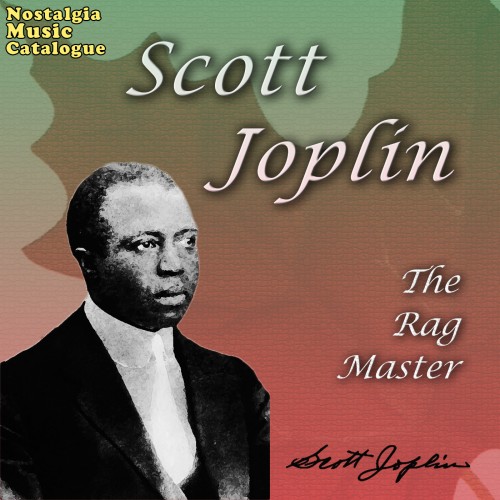

Laibman’s cousin Schoenberg was learning ragtime, so they joined forces. “But he was trying like hell.”ĭave Van Ronk suggested breaking the songs down into parts for two guitars. “He couldn’t really do what he was trying to do-which was to play complete piano rags,” Charters writes. The backstory behind the album, producer Sam Charters explains in the liner notes, involved Laibman’s lonely struggle to master the idiom. Joplin was proven to be a fingerpicking source on The New Ragtime Guitar, recorded in 1971, featuring guitarists David Laibman and Eric Schoenberg. Though the choice of ragtime was a bit anachronistic, Marvin Hamlisch nevertheless won an Academy Award for best-adapted score and his rendition of the theme song climbed the radio charts. Director George Roy Hill chose “The Entertainer” as the theme to his 1973 Depression-era movie, The Sting. Rifkin recorded two more albums of Joplin music, and other prominent musicians followed Rifkin’s tack. In 1970, Nonesuch Records released Joshua Rifkin’s Piano Rags by Scott Joplin, which became a tremendous success. Ironically, it was a classical music label that helped revived Joplin and ragtime. The closest he came was a barebones recital in 1915 at Harlem’s Lincoln Theatre, where he provided the orchestration on piano. In his final years, he was debilitated by tertiary syphilis and an exasperating struggle to stage his 1911 opera, Treemonisha. Joplin’s musical sophistication would prompt him to move beyond ragtime, to ballets and operas, an ambition Stark tried to dissuade. The melody takes surprising twists and turns and the bass part is equally felicitous. Most rags were divided into three strains, or sections, whereas “Maple Leaf Rag” has four. While “Maple Leaf Rag” was not the first ragtime instrumental published-that would be William Krell’s “Mississippi Rag” in 1897-it was the most musically ambitious for the day. Marine Band made one of the earliest recordings of the song. When the director pleaded ignorance, Alice assured him that “the Boys” played it often for her, and the request was met. At a White House soiree during Theodore Roosevelt’s administration, the president’s 17-year-old daughter, Alice, asked the director of the U.S.

While “Maple Leaf Rag” was not the first ragtime instrumental published, it was the most musically ambitious for the day. Nonetheless, the royalty from this composition alone provided Joplin with a comfortable base income. Stark boasted that “Maple Leaf Rag” sold more than a million copies, “and no abatement of demand,” though it’s not proven those numbers were met in Joplin’s lifetime. The composer was guaranteed one cent per copy. “Maple Leaf Rag” was published in 1899 by John Stark and Son of Sedalia, Missouri, where Joplin lived at the time. “It’s a song that people like when they hear it,” fingerstylist Pat Donohue says. Though “Maple Leaf Rag” was at no point forgotten, it was again a popular gateway to the genre. (Current fingerstyle great Mary Flower even has an instructional DVD devoted to ragtime guitar.)Īs Joplin reigned during the music’s heyday, he reclaimed the throne upon its return. And Dave Van Ronk deserves special mention for recording “The St. Bodewalt Lampe and George Sidney Reverend Gary Davis cut an abbreviated version of “Maple Leaf” called “Make Believe Stunt.” Indeed, by the time of its resurgence in the late ’60s and ’70s, many acoustic pickers were playing real ragtime-David Laibman, Eric Schoenberg, Stefan Grossman, Duck Baker, Guy Van Duser, Ton Van Bergeyk, Lasse Johansson, and others. Country-blues guitarists recorded simplified ragtime forms: Mississippi John Hurt based “My Creole Belle” on a section of “Creole Belles” by J. Snippets of the old style ran through popular songs and jazz tunes, many of which placed “rag” in the title. But Joplin’s syncopated, intricate creations, such as “Sunflower Slow Drag,” “Elite Syncopations,” “The Entertainer,” “The Cascades,” and, of course, “Maple Leaf Rag,” continue to regale us. His music-and ragtime in general-lay dormant through the 1920s and ’30s. Lottie Joplin regretted that decision for the rest of her life. The maestro had requested that his most famous composition, “Maple Leaf Rag,” accompany the service, but his widow deemed such joyful music to be inappropriate. Joplin’s funeral was a quiet affair, with scant notice in the press. The big news of the day was America’s involvement in the Great War, not the passing of a once-popular composer. This year marks the centennial anniversary of ragtime innovator Scott Joplin’s death, on April 1, 1917.
RAGTIME SCOTT JOPLIN FREE
This article is free to read, but it isn't free to produce! Make a pledge to support the site (and get special perks in return.) LEARN MORE.įrom the August 2017 issue of Acoustic Guitar | BY STEPHEN BOISSON


 0 kommentar(er)
0 kommentar(er)
